Women Writers of American Press / American Women of the Press
directory to a series of profiles by A. C. Haeselbarth, in The Editor and Publisher (1913-15)
This page provides links to Haeselbarth's profiles, with some augmented by additional information. The names below are listed in alphabetical order, but their respective entries are presented chronologically by publication date.
Ruth Cameron (Persis Dwight Hannah)
Hetty Cattell (aka Hetty Cattell Parker, Hettie Fithian Cattell)
Dorothy Dix
Flora Kendall Edmond
Grace Van Braam Gray
Nixola Greeley-Smith
Marion Brunot Haymaker
Rose Henderson
Rosalie Armistead Higgins
Susah Franks Iden
Lily W. Lykes
Sue McNamara
Marguerite Mooers Marshall
Ada Patterson
Martha H. Porter
Henrietta Rodman
Edna K. Wooley
black bar ╹ at left margin returns page to top.
a separate page has been created for A. C. Haeselbarth (1861-1918) at 2576.
this page remains a work in progress.
![]()
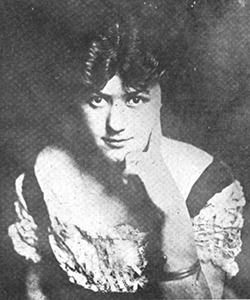
Nixola Greeley-Smith, Humanist
Star of the Evening World employs talent recalling illustrious forbear in “Creamy” journalism that has no lemons — Advocates use of style with punch and cultivation of a direct and sincere mind.
(August 16, 1913) : 172 : linkwikipedia :
Nixola Greeley-Smith (1880-1919) : linkdiscussion in Alice Fahs, Out on Assignment : Newspaper Women and the Making of Modern Public Space (2011)

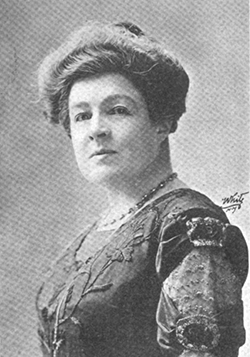
Dorothy Dix
of the New York Evening Journal
(October 4, 1913) : 304 : linkSuffragist (as were most of the women listed here); known for her advice columns and coverage of murder trials.
wikipedia :
Elizabeth Meriwether Gilmer (1861-1951) : linkShe first used the pen name Dorothy Dix in 1896 for her column, “Sunday Salad,” in the Picayune; Dorothy, because she liked the name, and Dix in honor of an old family slave named Mr. Dick who had saved the Meriwether family silver during the Civil War.
NYTimes obituary (December 17, 1951) : link (paywall)

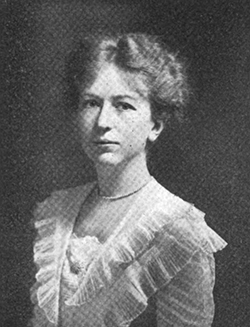
Miss Grace Van Braam Gray
of the Philadelphia Times
(October 11, 1913) : 326 : linkborn in Albany
“...and then took up feature work under the name of Peggy Van Braam. This stuff ran in all the Munsey papers, and I have also used the name on some magazine work” (Haeselbarth profile)seems to have vanished after 1917; I'm still digging.
“writings and about” at 2591


Miss Marguerite Mooers Marshall
of the New York Evening World
(October 18, 1913) : 356 : linkTufts, 1907
1887-1964wrote several novels, including The Drift (1911)
NYPL copy/scan : link
with this (chilling) dedication :
To the one for whom it was writtentwo informative reviews (with apology-prefaced spoilers) at goodreads : link
access to her Evening World writing via New York Historic Newspapers : link
(have not delved much into this yet, but there are many by-lined items)—
Marshall, Marguerite Mooers
B. Kingston, N H, Sept 9, 1887. EDU: Sanborn Seminary, Kingston, N H; Tufts Col. 1907. CONDUCTOR OF COLUMN, The Woman of It, N Y Eve World, 1910—
Formerly: Boston (Mass) Herald, 1908-09; Morn and Sun World, 1909-10. AUTHOR: The Drift. MEM: Phi Betta Kappa; Phi Beta Kappa Alumnae; Women’s City Club of N Y.ex M. N. Ask, ed., Who’s Who in Journalism (1928) : 251
U California copy/scan (via hathitrust) : link

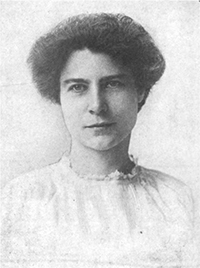
Miss Edna K. Wooley
of the Cleveland News
(October 25, 1913) : 368 : link124 items via LoC’s Chronicling America : link (20240412)
The last item there is an A.P. story in The Bismark Tribune (April 3, 1929) —
Work Goes on Despite Accident to Writer
Cleveland, Ohio, April 3.
Despite a broken hip, Edna K. Wooley writes a daily newspaper column from her hospital bed.
For 23 years without a break Miss Wooley turned in copy to the woman's page of the Cleveland News. After her accident the column disappeared. In two weeks, however, she had recovered sufficiently to feel the urge to write. Physicians were persuaded to prop her typewriter over her bed, and Miss Wolley resumed her writing.
link

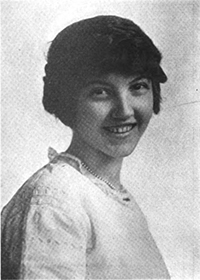
Miss Lily W. Lykes
of the Birmingham (Ala.) News
(November 1, 1913) : 390 : linkalso, Lily Lykes Rowe, and Lily Lykes Shepard (correspondent for the New York Tribune), first president of the Women’s National Press Club; and various writing/communications positions in Defense Department).
1891-1974 (*)several items via LoC’s Chronicling America : link
Lily Lykes Rowe, “Judge Kathryn Sellers, The First Woman Appointee to the Federal Judiciary” The Ladies’ Home Journal 37:1 (January 1920) : 45, 138 : link (hathitrust)
Lily Lykes Rowe, “Mary Anderson, How an Immigrant Girl Rose to High Federal Office” The Ladies’ Home Journal 37 (August 1920) : 61-62 : link (hathitrust)
Lily Lykes Rowe, “Battle Monuments in France,” Daughters of the American Revolution Magazine 55:3 (March 1921) : 138-169 : link (hathitrust)
Lily Lykes Rowe, “Archives Hall Planned by Congress,” Daughters of the American Revolution Magazine 61:9 (September 1927) : 641-650 : link (hathitrust)
dramatic photos of chaotic records storageLily W. Lykes, “Zebulon Pike, National Hero,” Daughters of the American Revolution Magazine 62:9 (October 1928) : 597-603 : link (hathitrust)
Lily Lykes Shepard, “Dutch Mementoes of Lewes,” National Historical Magazine (issued by the National Society of the Daughters of the American Revolution) 75:1 (January 1941) : 35-37, 73 : link (archive.org)
Lily Lykes Shepard, “The Army Nurse Corps Looks Ahead,” Army Information Digest 10:4 (April 1955) : 26-28 : link (archive.org)

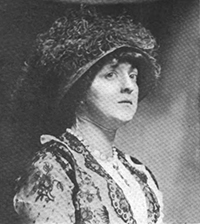
Marion Brunot Haymaker
of the Pittsburgh (Pa.) Chronicle-Telegraph
(November 8, 1913) : 408 : link1884-1975
authored “The Woman Editor,” Editor and Publisher (October 9, 1909) : 5 : link
same (via google books) : link
subtitle : The feminine influence grows stronger in daily newspaper offices — Pittsburg newspaper woman analyzes present conditions and looks ahead to women managing editors“Evolution of the Department Store” in National Magazine 38 (July 1913) : 725-732
U Iowa (via hathitrust) : link
U Michigan (via google books) : linkMARION BRUNOT HAYMAKER, b. June 06, 1884, Murrsyville, Westmoreland Co, PA; d. November 04, 1975, North Truro, Barnstable, MA
Notes for MARION BRUNOT HAYMAKER: Marion was characterized as an “ace Pittsburg newspaperwoman” (The Bulletin Index, 8 Feb 1934). At age 18, she went to work as a woman’s page editor for Senator George Trimer Oliver’s Chronicle-Telegraph. She originated the Eleanor Gale lovelorn bureau. During the war, she wrote a “Stars and Stripes” column, which printed letters from soldiers at the front. In 1921, she was the only local newspaperwoman to cover the Republican Convention, which nominated Warren G. Harding. After the convention, she moved to New York to write romantic serials, and later she lived in Provincetown and wrote four novels that she hoped would be published after the Depression ended. Marion’s friends included playwright Eugene O’Neill, artist Ross Moffat and author Edna Ferber. She wrote an article for National Magazine entitled “Evolution of the Department Store” which was published in 1913. In a newspaper article dated 27 Jan 1941, it was stated that she divided her time between homes in Provincetown, Massachusetts, New York, and Pittsburgh, where she resides for several months of each year.
ex Descendants of Christopher “Stoffel” Haymaker
Working file of Mary Lou Cook (updated 26 May 2023, and with whose gracious permission the passage is quoted here) : 51 : link (pdf)
home page : linkseveral interesting mentions in Candi S. Carter Olson, her dissertation “Try to Lift Someone Else as We Climb” : 120 Years of the Women’s Press Club of Pittsburgh and the Women’s Movement (U Pittsburgh, 2013) : link (pdf)

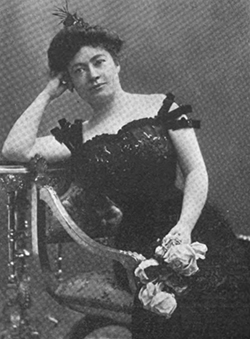
Ada Patterson
of the Hearst Service, warns young aspirants against the grind of journalistic work — successful qualities include detached view of life, sympathy, untiring energy and imagination.
(November 15, 1913) : 424 : linkAda Patterson (1867-1939)
wikipedia : linkSamantha Nicole Peko, “Ada Patterson” in Journalism History (Las Vegas) 43:3 (Fall 2017) : 162-171
have not seen, but
Samantha N. Peko, “Stunt Girls: Elizabeth Bisland, Nell Nelson, and Ada Patterson as Rivals to Nellie Bly” (MS Thesis, Ohio University; August 2016) : link (includes link to the pdf)
abstract :
In the 1880s, women journalists working for newspapers were confined to writing for the “women’s pages.” They wrote about food, fashion, and culture. But change was on the horizon. Nellie Bly made headlines for her “stunt girl” reporting in 1887, and papers around the country were quick to follow. “Stunt girl” journalism opened the doors for many women reporters. Women reporters transitioned from being a novelty to a welcome addition to the newsrooms. Yet, other than Nellie Bly, the legacies and reports of Bly’s adversaries has been lost to history. This thesis resurrects three “stunt girls” who were well known in their own time: Nell Nelson, Elizabeth Bisland, and Ada Patterson. Primary sources from the nineteenth century were studied to determine who these women were, what they did, and how they used their notoriety to create a place for themselves at a job that they were initially barred from entering.Jean Marie Lutes, “Into the Madhouse with Nellie Bly: Girl Stunt Reporting in Late Nineteenth-Century America” in American Quarterly 54:2 (June 2002) : 217-253 : link
Candi Carter Olson, “‘A Cosmic Shoulder for the Public to Lean Upon’ : Gertrude Gordon and the Rise of Women Journalists” in Pennsylvania History : A Journal of Mid-Atlantic Studies 83:4 (Autumn 2016) : 470-501 : link
and (?) : link

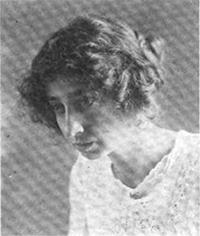
Hetty Cattell
The woman who would succeed must like writing, bristle with ideas, uphold a literary standard and have dogged determination, declares Miss Hetty Cattell, of the Rocky Mountain News
(November 29, 1913) : 460 : linkHetty Cattell (who also wrote as Hetty Cattell Parker and Hettie Fithian Cattell) was an energetic and prolific reporter and feature writer, who careered from Denver to Pasadena to Fort Worth, on to Chicago and New York.
Two separate pages are now devoted to her :
writings : 2573a, and
life and career : 2573b

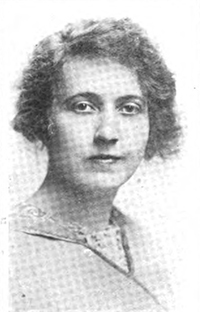
Rose Henderson
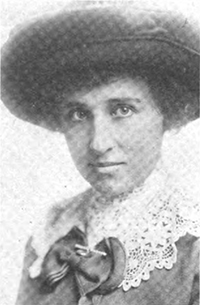
Sue McNamara
Miss Rose Henderson, Associate Editor of the Des Moines Register and Leader, believes optimism essential to success in journalism — Miss McNamara, of the News, holds that enthusiasm and imagination are necessary.
(December 6, 1913) : 476 : link

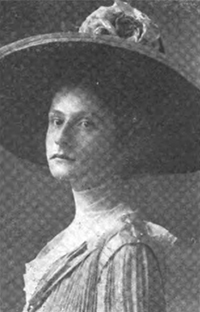
Ruth Cameron
Ruth Cameron, whose articles appear in 150 newspapers, finds her mail the greatest source of interest — believes in woman suffrage and is a feminist — preliminary training for the work
(December 27, 1913) : 532 : linkRuth Cameron was the pen name of Persis Dwight Hannah (1886-1965)
Tufts 1907 (same year as Marguerite Mooers Marshall, and both with honors : source (pdf));
author of Chit-Chat (1907) : link (hathitrust)
a collection of “conduct of life” sketches, likely a selection from her syndicated essays.see Janet Hutchins, “#WHM – Persis Dwight Hannah, Alpha Xi Delta and Reporter,” posted March 27, 2016 at Fraternity History & More, a blog in which “Fraternity/Sorority Historian Fran Becque, Ph.D., shares stories connecting the past to the present and the future” : link
and from Ishbel Ross —
“Long before ‘Listen, World!’ burst like a thunderclap on Hearst readers, Ruth Cameron’s column was known throughout the country. Written by Persis Dwight Hannah, it has been going for twenty-seven years and is syndicated in hundreds of papers. It carries various heads but is most generally known as ‘The Woman Philosopher’ or ‘Says She.’”
ex chapter 29 “The Woman Columnist” Ladies of the Press (1936) : 386-387 : link—
Cameron wrote a piece on “puttering” (included in her book Chit-Chat), which is included (and transcribed) in my putterings project : 035

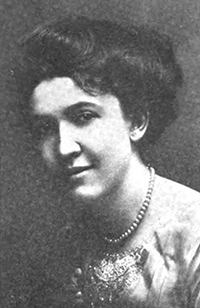
Miss Rosalie Armistead Higgins
of the Montgomery (Ala.) Advertiser, is a Dixie girl who has made good as a reporter and editor in the last five years.
(October 31, 1914) : 396 : link554 items at LoC’s Chronicling America (Alabama only, probably more beyond that state) : link

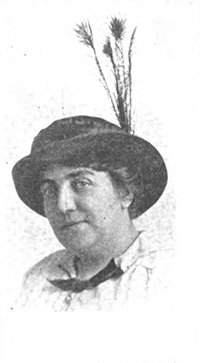
Miss Martha H. Porter
of the Des Moines (Ia.) Register and Leader, finds in her work life at first hand — Got big scoop from Mr. Bryan and didn’t know it.
A. Haeselbarth [missing middle initial]
(November 21, 1914) : 450 : link

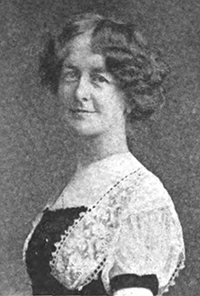
Miss Flora Kendall Edmond
of the Manchester, N.H. Leader, expresses her ideas on newspaper work as a vocation for women
(December 12, 1914) : 508 : linkanother profile (and photograph) —
“In the Lecture Field : A New Hampshire Woman Now Well at the Front,” in The Granite Monthly 43:6 (June 1911) : 186-187 : link

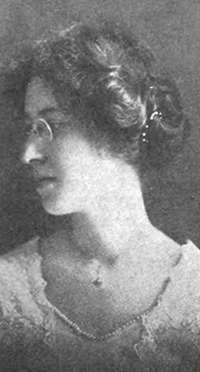
Susan Franks Iden (no byline)
(and separate article Henrietta Rodman)
(January 30, 1915) : 668 : link1885-1944
findagrave : linkauthored “Some Suffragists I Have Known,” Everywoman’s Magazine, Special Session Edition, 4 (July-August 1920)
mentioned in Anastatia Sims, The Power of Femininity in the New South: Women’s Organizations and Politics in North Carolina, 1880-1930 (1997) : link
(have not seen)James R. Troyer, Nature’s Champion: B. W. Wells, Tar Heel Ecologist (2014) : 72-73 : link
describes her writing career, and interest in plants :
“Their association bore its greatest fruit in the circumstances leading to the publication of Wells’s book, The Natural Gardens of North Carolina. In addition to playing a crucial role in the sponsorship of that book by the Garden Club of North Carolina, Iden also furnished one of the photographs in it, that of the flowers of the bloodroot plant.”
and elsewhere (p67) in the same volume
“It was like having the scales lifted from eyes long dimmed by defective sight to make an excursion the past week-end through the Coastal Plain of North Carolina . . . with a nature study part, drected by Dr. B. W. Wells, professor of botany at State College. Instead of marking the progress of the trip by sign-boards . . . that clutter up the scenery of the road, the trip became a series of ever-changing plant communities and regions of progressive geological interest. It was like seeing a drop of stagnant water spring to life with myriad protozoa under the mircoscope to note the trees and flowers take on individuality and variety in their own plant communities, in what had heretofore been simply stretches of woods and fields with litle to distinguish them from each other.
Susan Franks Iden, 1926”Susan Franks Iden, Edenton Street Methodist Sunday School, Raleigh, N.C. : historical sketch commemorating the opening of the new Sunday School building, April 28, 1912
Duke Divinity School copy/scan, via archive.org : link

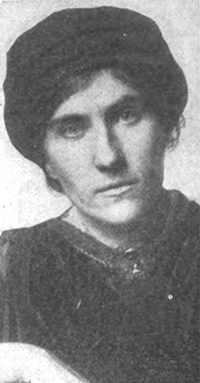
Henrietta Rodman
Miss Rodman on Tribune, Teacher mother now writing educational columns of interest.a news piece, not part of the “Newspaper Women of America” series, but run next to the profile of Susan F. Iden. :
Miss Henrietta Rodman, who became famous as the storm center of the “teacher mother” controversy, has joined the staff of brilliant writers that the New York Tribune is gathering. Her daily column of school news and comment will reflect the intimate knowledge of educational conditions in the metropolis that Miss Rodman possesses.
Following her suspension by the School Board on account of a letter written to the Tribune, a purse was made up by the teachers to cover the year’s salary forfeited. This tribute will of course not be necessary in view of Miss Rodman’s immediate acceptance of the Tribune’s offer.Henrietta Rodman (1877-1923)
wikipedia : link
20240315 (20240415)